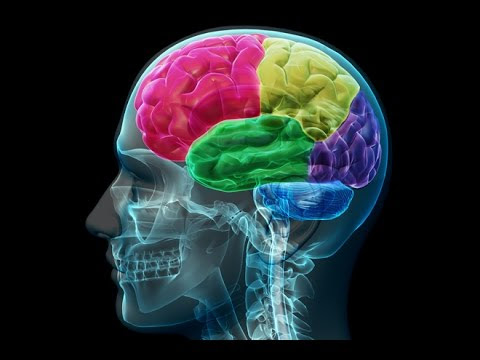


NeuRepair Neurosurgeons offer restorative services for the human brain by employing their specialized knowledge and surgical skills to diagnose, treat, and manage a wide range of brain conditions. With their expertise, NeuRepair Neurosurgeons can perform intricate procedures to remove brain tumors, repair damaged blood vessels, relieve pressure on the brain, control seizures, and improve the quality of life for patients with various brain disorders.
We work collaboratively with other healthcare professionals, including neurologists, radiologists, oncologists, primary care providers (PCPs), pain management specialists, orthopedics, physical medicine and rehabilitation specialists, sports medicine physicians, Ear Nose and Throat specialists (ENT), plastic surgeons, and vascular surgeons to provide the most comprehensive care possible for individuals with brain-related conditions, ensuring the best possible outcomes for our patients.
Definition: A brain tumor refers to an abnormal growth of cells within the brain. Tumors can be cancerous (malignant) or non-cancerous (benign). They can originate within the brain (primary tumors) or spread from other parts of the body (secondary tumors).
Procedure: Treatment of brain tumors may involve surgical intervention, where you remove the tumor to the extent possible without causing damage to healthy brain tissue. This procedure is known as a craniotomy. In some cases, radiation therapy and chemotherapy may be recommended alongside or instead of surgery.
Definition: Cerebrovascular diseases affect the blood vessels that supply blood to the brain, leading to conditions such as stroke, aneurysms, and arteriovenous malformations (AVMs).
Procedure: Treatment options for cerebrovascular diseases include surgical procedures such as aneurysm clipping or endovascular coiling to prevent rupture or to repair a damaged blood vessel. In some cases, neurosurgical interventions aim to remove or repair AVMs to prevent potential bleeding.
Definition: Hydrocephalus is a condition characterized by the accumulation of excessive cerebrospinal fluid within the brain, leading to increased pressure and potential damage to brain tissue.
Procedure: Neurosurgical intervention for hydrocephalus typically involves the insertion of a shunt system. This system helps divert excess cerebrospinal fluid from the brain to another part of the body, such as the abdomen, where it can be reabsorbed.
Definition: Epilepsy is a neurological disorder characterized by recurrent seizures. It results from abnormal electrical activity in the brain.
Procedure: In some cases of drug-resistant epilepsy, surgical procedures such as a lobectomy, multiple subpial transections (MST) may be considered. These procedures aim to remove or disconnect the brain regions responsible for generating seizures.
Definition: Movement disorders, such as Parkinson’s disease or essential tremor, involve abnormal movements or loss of control over voluntary movements.
Procedure: Deep brain stimulation (DBS) is a surgical procedure commonly used to treat movement disorders. It involves implanting electrodes into specific areas of the brain to modulate abnormal neural activity and alleviate symptoms.
Definition: Chiari malformations are structural defects in the cerebellum, where the lower part of the brain extends into the spinal canal. This can cause compression and disruption of normal cerebrospinal fluid flow.
Procedure: Neurosurgeons may perform a surgical procedure called a posterior fossa decompression. This involves removing a small section of the bone at the back of the skull to create more space and relieve pressure on the brain and spinal cord.
Definition: Arachnoid cysts are fluid-filled sacs that develop within the arachnoid membrane, one of the protective layers covering the brain and spinal cord. (rarely requires surgery)
Procedure: Surgical treatment may involve creating a small opening in the skull and draining the cyst or, in some cases, removing the cyst wall to prevent recurrence.
Definition: Trigeminal Neuralgia is a chronic pain condition affecting the Trigeminal Nerve, which supplies sensation to the face. It leads to severe, episodic facial pain.
Procedure: Minimally invasive procedures, such as percutaneous radiofrequency ablation or balloon compression, may be performed to selectively lesion or compress the trigeminal nerve to alleviate pain. In cases where these approaches are not effective, open surgical procedures like microvascular decompression may be considered to relieve nerve compression.
Definition: Temporal arteritis, also known as giant cell arteritis, is an inflammatory condition affecting the medium and large arteries, particularly those in the head and neck.
Procedure: Treatment typically involves the administration of corticosteroids to reduce inflammation and prevent complications associated with temporal arteritis. Neurosurgeons may be involved in performing temporal artery biopsies to confirm the diagnosis.
Definition: Cranioplasty is a surgical procedure performed to repair or reconstruct the skull after a traumatic injury, previous surgery, or congenital deformity.
Procedure: Neurosurgeons use various techniques and materials, such as autografts (patient’s own bone), allografts (donor bone), or synthetic materials, to reconstruct the skull and restore its integrity.
Definition: A concussion is a mild brain injury caused by a sudden impact to the head or body, leading to symptoms like headache, confusion, and dizziness.
Procedure: Diagnosing a concussion involves a medical assessment, including physical examination and sometimes imaging tests, to evaluate symptoms like headache and confusion. Treatment typically includes rest and gradual return to normal activities once symptoms improve.
Therapy is directed toward individual symptoms, including rest, lifestyle modifications, and medication management.